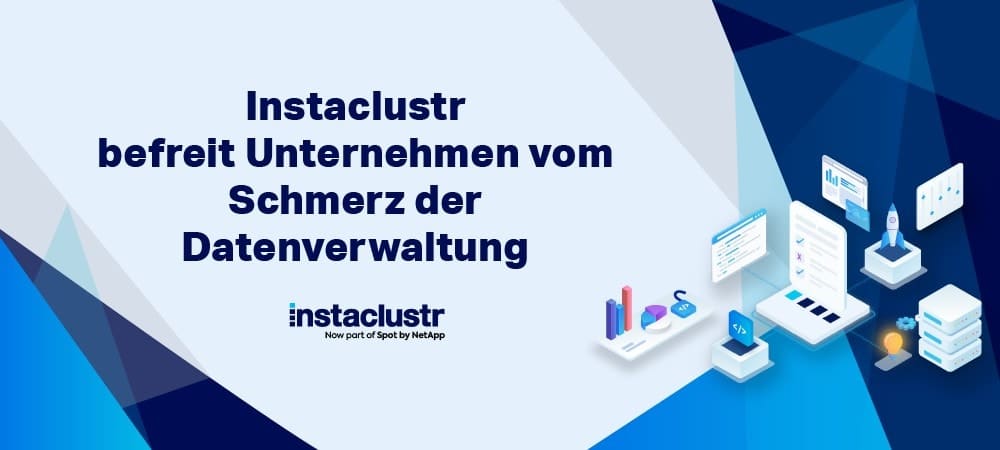Instaclustr Frees Companies From the Pain of Data Management


Until now, anyone who needs modern data infrastructures has been faced with a difficult decision: proprietary software or open source software (OSS). In order to keep the initial effort as low as possible, many companies intuitively rely on proprietary software, which they can install virtually at the push of a button. Updates, support and bug fixes come directly from the manufacturer. However, the disadvantage of this variant is the high license fees. Even extended features either turn out to be expensive additional services or are not even possible in the first place.
Open source software is an excellent alternative to proprietary and open core solutions. It is not only more cost-effective, but is also usually ahead in terms of quality. In addition, it is often the better choice in terms of security due to timely updates and bug fixes. Unfortunately, however, open source data management and data layer solutions often have a very high entry level, so that companies have to plan a lot of staff resources, especially for implementation and commissioning - it may even be necessary to hire new staff. And even after setting up the data infrastructure with open source solutions, the company's IT experts are forced to manage and monitor everything by hand.
Instaclustr: the best of both worlds
The Instaclustr managed platform combines the low entry level of proprietary software with the flexibility and cost efficiency of OSS. Unlike traditional managed services for individual applications, it comprises a complete and coordinated ecosystem for data infrastructures. After installing the platform, companies individually assemble their own data infrastructure via a uniform user interface (UI).
Instaclustr currently offers the following open source applications as part of its managed platform:
- The databases PostgreSQL, Apache Cassandra and Redis as the basis for the IT data infrastructure.
- Apache Kafka and the integration solution Apache Kafka Connect as the de facto standard platform for streaming and messaging.
- Apache ZooKeeper for the coordination and management of distributed applications.
- Apache Spark, a general-purpose cluster computing framework that is ideal for working securely with large data sets.
- OpenSearch, an open source fork of Elasticsearch, as a scalable linear search and analytics suite.
- Cadence, a stateful workflow engine that significantly simplifies the development and operation of complex, long-running and distributed business processes.
Simplicity and security
Control of the managed platform is at all times in the hands of the company itself: Via the centralized UI, the IT department manages and scales the resources, opens or closes data clusters and adds services or new functions. For all these tasks, however, no invasive intervention in the IT or cloud infrastructure is required - an elaborate artificial intelligence takes over the complicated tasks that take place under the hood - including monitoring the health of the system. This approach frees up staff resources, as developers and administrators can focus on value-added tasks.
Naturally, many companies shy away from hiring external service providers to manage their data infrastructure. This is especially true for companies that rely on the processing and storage of sensitive data such as customer addresses or bank details. But even in this respect, using Instaclustr is not a problem. Although the managed platform runs on the company's (private, hybrid or multi-) cloud infrastructure, data protection is guaranteed at all times thanks to GDPR as well as SOC2 compliance and PCI certification. In addition, Instaclustr's IT experts only manually access the platform at all to fix any error. However, this is only the case when Instaclustr's AI is not able to do so itself in rare cases. The high degree of automation significantly reduces the administrative effort and increases reliability by excluding human error as far as possible.





